Hunters across the world are constantly looking for ways to improve their chances to harvest animals. We look for new technology, equipment, and even clothing to get more opportunities to hunt successfully.
One great invention is deer feeders. Many hunters have stumbled upon this appreciable product and as they set it up, they already imagine big bucks on their walls.
They wait anxiously to see their trail cameras after the initial setup, only to face a huge disappointment to find out that all of their feeds were eaten — not by deer, but by varmints!
Disclaimer: This article contains affiliate links.
How to Get Rid of Varmints
Varmints, like raccoons, are a nuisance.
They don’t just eat all the deer feed, but they’re also known to chew up wires, eat through plastic barrels, and even bend parts of the feeder from their weight while climbing to gain access to the grains!
They are scavengers. So when they find food, they put an enormous amount of effort to obtain it.
Shark Teeth
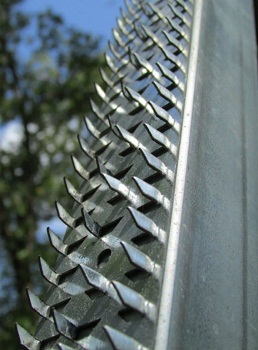
Boss Buck Shark Teeth is one direction to go for a feeder that requires the animal to climb a slender leg to get to the feed. These can be purchased at stores such as Cabela’s and Bass Pro Shops, available in 36” X 1.5” strip of metal.
These strips have sharp barbs protruding close together — the full 36”. Installation is a breeze. Just screw them to each of the legs of your feeder.
It is ideal to place the Shark Teeth about a foot above the ground to ensure that the animal cannot bypass the strip by leaping from ground level to the leg of the feeder.
How it Works
These sharp barbs will hurt the climbing animal’s feet if it attempts to access your tripod feeder by its legs. Boss Buck also states that it will deter birds from perching on them and they also keep the larger animals from rubbing up against your feeder, which can knock it over.
There are some homemade versions of this product that can be used instead. Like a tin cut in a way that resembles the “shark teeth” and then bent upwards to make it difficult or painful for animals trying to climb.
Leg Funnel
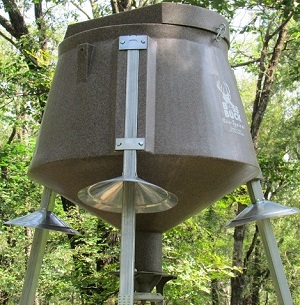
A leg funnel works on a variety of feeder legs. It is exactly what it sounds like — a very broad and steep funnel shape that is placed around each leg. So if a varmint is climbing, it is faced with the wide edge of the funnel, thus creating a road block that they cannot climb or jump over.
This can also be used for tree mounted gravity feeders, assuming you can find or fabricate a funnel big enough to go around the trunk of a tree.
Poles around Legs
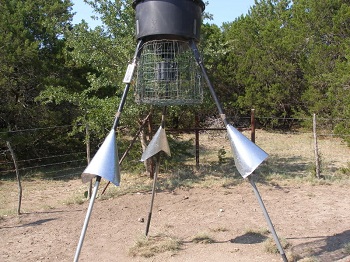
This works well for a tripod style feeder because of the angle of the legs and the ease of blocking the access points. An overview of how to build one:
- Take a slick and a slightly larger tube that the deer feeder leg can slide into.
- The tube is then slid up toward the feeder and fastened to the leg.
If the material is slick enough, then the animals will just slide right off, preventing them from reaching their goal.
One hunter found that using roof flashings to make the tubes was a slick material and that the animals were unable to reach his feeder.
What if it doesn’t work on your case?
If the material still has any chance to be climbed, follow these steps:
- Drill a hole on the upper edge of the tube.
- Tie a rope or string through the hole.
- Attach it to the feeder.
This will suspend the tube and allow it to spin freely in both directions without sliding down the leg. And if the animal tries to grip on the tube, it will turn on them using their weight which will cause their fall.
You can also use this concept on a gravity feeder that is mounted on a T-post. It might take a bit more work to ensure that the tube is slick enough or can spin. But you can always add a funnel just in case.
Varmint Zapper
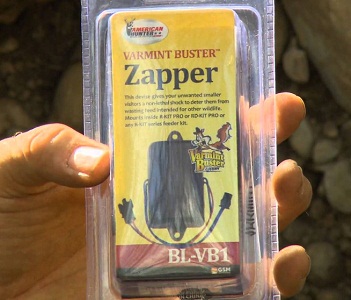
One traditional form of varmint control is an electric shock whenever the metal is touched. Of course, you must be sure that the deer cannot reach any part of the metal as they might never return if they were electric shocked.
Coat the Feeder Legs

Another creative and straightforward thought is coating the feeder legs with Crisco shortening.
The animals find it greasy and do not like the feel of it on their feet. Plus, the rain won’t wash it off and the varmints won’t lick it off. But you need to apply a very thick layer and reapply as often as you see fit.
With each form of varmint control, it is wise to have a backup if there is a possibility of one failing (like leg poles and funnels or electric shock and tubes etc.). This way, you are not discouraged if one fails, especially that you still have varmints to stop.
Do NOT Forget the Obvious
There are ways to make it difficult for varmints to rummage and some might stop them completely. But first, understand these often overlooked attributes.
Material
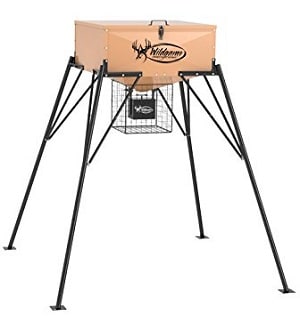
The first thing to keep in mind when purchasing or building your deer feeder is to use durable and thick material that makes it difficult for a rodent to chew on. This preserves the life of your game feeder even if the pests overcome the obstacles that are in front of them.
The most durable, yet heavy material is metal. However, it can become extra difficult to set it up because of its weight. It is cumbersome to move it to new locations too.
Make sure you notice any hanging or exposed wires that the animals can chew or use to climb. Varmints can cut the wires to battery sources.
Access
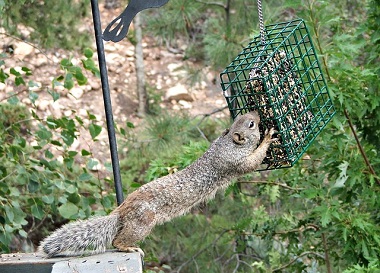
Mind the location and accessibility of the varmint to the feeder. Feeders that are mounted to a tree are very inviting and it’s a lot harder to prevent them from getting to it.
A scavenging animal love to have food just handed to them or even find an endless food supply with minimal effort required from them. This is why they are more than willing to explore great lengths to obtain access to any feeder.
Lastly, think like a varmint and try to figure out all the possible entry points that they may use. They are not satisfied with the food just on the ground. They want to stock up for the winter and possibly years to come.
Dealing With Larger “Varmints”
Varmints aren’t only the small animals such as squirrels or raccoons, bears are also classified as one.
If bears reside in your area, you need to take into account that they too love free food and can do far more damage to your setup than any small animal ever can.
How to Keep Them Off
There are a couple of tips and ideas to keep bears out of your feeders as well, but they require a lot of extra work.
- Get the feeder out of the bear’s reach, although this is easier said than done. One way is to create sturdy slick legs for a tripod style but make it extremely tall. This is perfect on an automatic feeder since it spreads the feed automatically a couple of times in a day.
- Have a thick wire strung between two big trees, then have a crank and pulley system set into place. This will keep bears from accessing it by climbing the tree or standing on its hind legs to reach it. This again is applicable to an automatic feeder since an animal can’t access the feed unless it is on the ground.
- Cement an extremely tall pole with a horizontal extender to hang the feeder. Ensure that you have ownership of the property and that you permanently want it placed on that spot.
Think Like a Varmint
Remember that varmints aren’t at the top of the food chain and a lot of them are scavengers so they pretty much do anything to stay alive and thrive. If they can see or smell food, they have an unbelievable drive to get to it. This is called survival.
When it comes to varmint control on your feeders, it is an all or nothing deal. If there is any hint of an access point, as long as they reside in the area, varmints WILL get to it.
But if you block every possible route, you should be set with more deer photos than your memory card on your trail camera can hold.


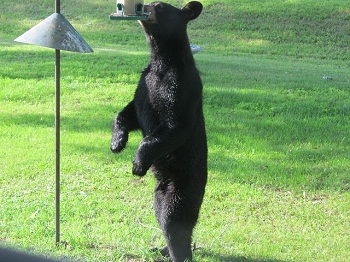

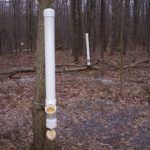

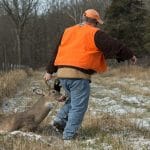
Comments are closed.